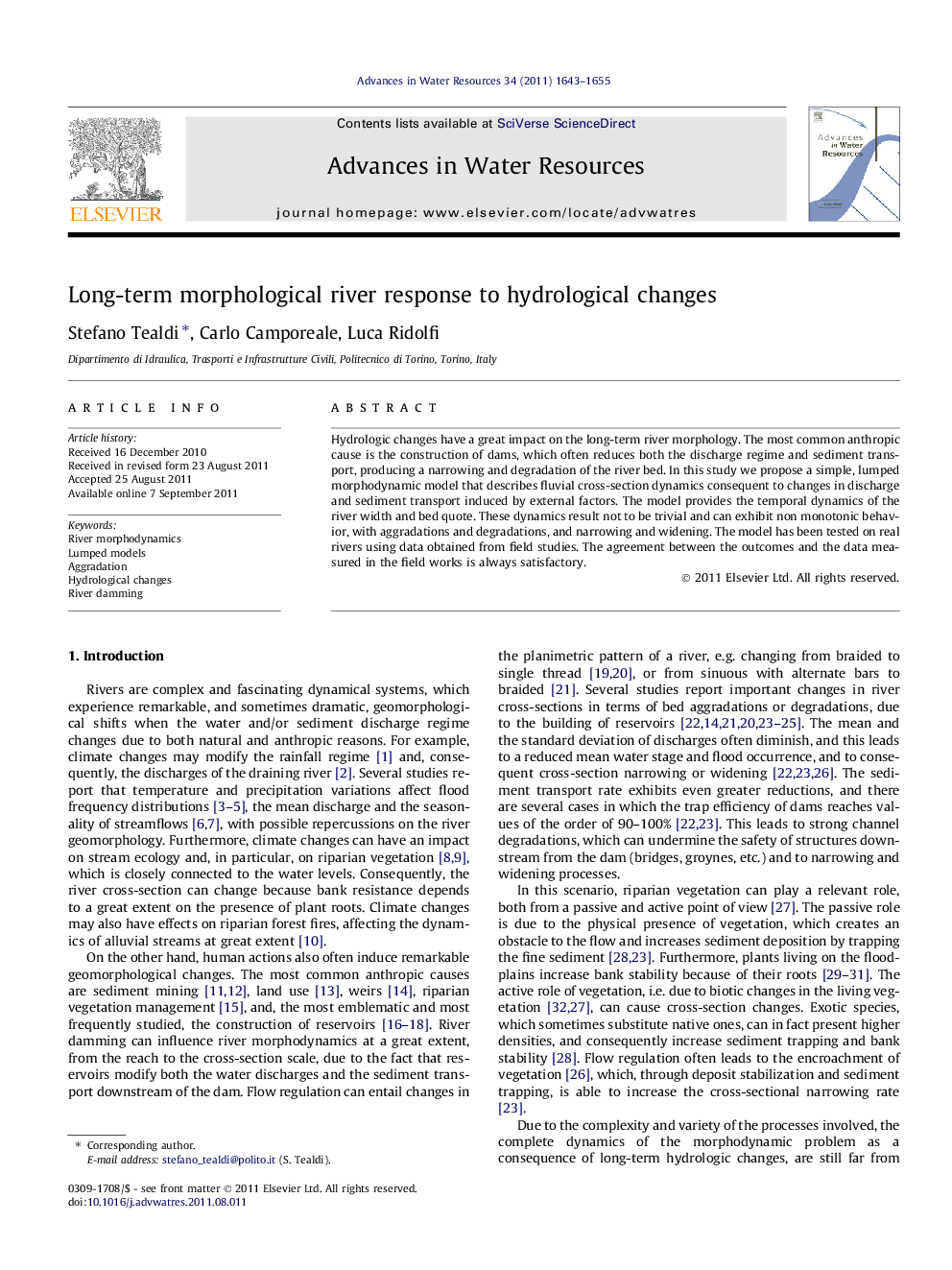| Article ID | Journal | Published Year | Pages | File Type |
|---|---|---|---|---|
| 4526092 | Advances in Water Resources | 2011 | 13 Pages |
Hydrologic changes have a great impact on the long-term river morphology. The most common anthropic cause is the construction of dams, which often reduces both the discharge regime and sediment transport, producing a narrowing and degradation of the river bed. In this study we propose a simple, lumped morphodynamic model that describes fluvial cross-section dynamics consequent to changes in discharge and sediment transport induced by external factors. The model provides the temporal dynamics of the river width and bed quote. These dynamics result not to be trivial and can exhibit non monotonic behavior, with aggradations and degradations, and narrowing and widening. The model has been tested on real rivers using data obtained from field studies. The agreement between the outcomes and the data measured in the field works is always satisfactory.
► Hydrological changes, for natural or anthropic reasons, can impact river morphology. ► A model is developed to obtain the temporal dynamics of river cross-section. ► The dynamics result not to be trivial and can exhibit non monotonic behavior. ► The model captures trends and values of real rivers.
